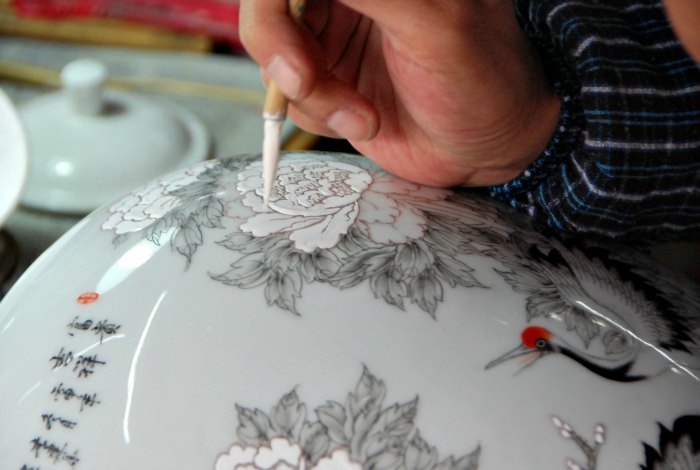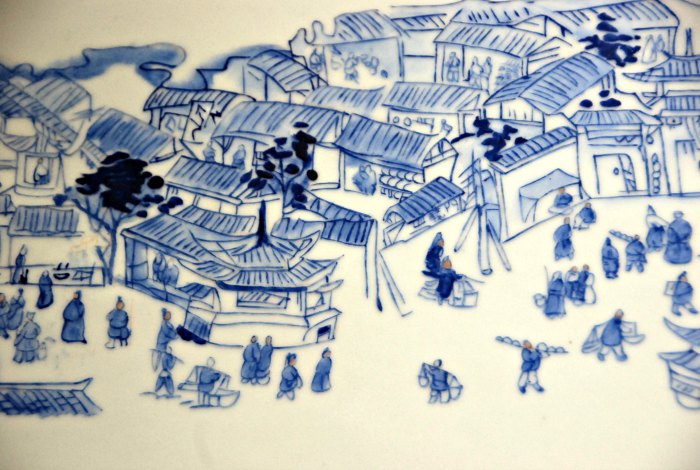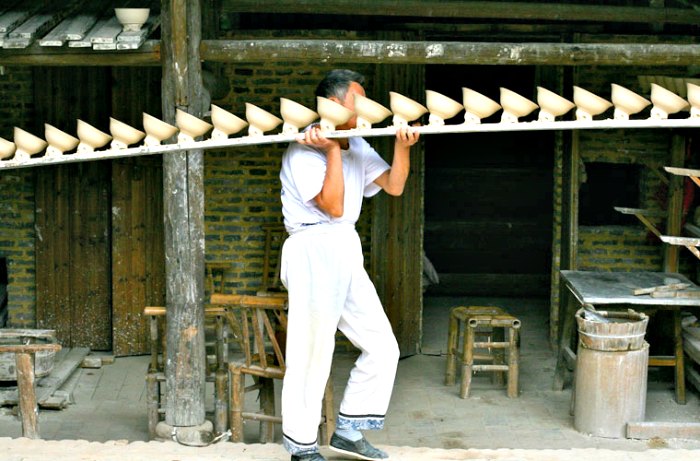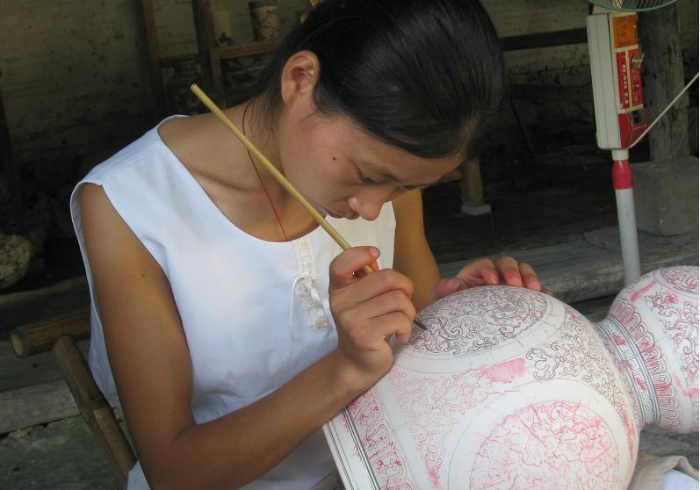In the heart of Jiangxi province, the city of Jingdezhen represents the gilded age of Chinese porcelain making, where for centuries emperors sought the creations of craftsmen from its lands.You’ve probably heard of ‘fine china’ and here is where it got its name! We’ve created a guide to help you choose real, handmade, and authentic Jingdezhen ceramics.
—
Located in northeastern Jiangxi, the city of Jingdezhen has reigned as the “porcelain capital” of China for close to two millennia. Surrounded by ample natural reserves of pure kaolin, the main ingredient used in pottery clay, the city began producing ceramics as early as the Han Dynasty (221–206 BC). By the Song Dynasty (960-1279), Jingdezhen had turned into a hotbed of workshops and kilns that specially created porcelain ware for the emperor and the imperial court.

Although the imperial court tried to keep their find a secret, the porcelain trade flourished along the Silk Road through the dynastic ages till the Cultural Revolution put a pause on things. It is only throughout the past decade that artisans have begun to re-learn the trade.
Unfortunately (as with all great things), the city regaining its status as the country’s porcelain capital has meant that some vendors try to pass off low quality, fake ceramics as auction-worthy pieces. Here are our tips for distinguishing the authentic items.
Wikimedia Commons
How is Jingdezhen porcelain made?
Before you can distinguish the real from the not-so-real, you first need a basic overview of how Jingdezhen ceramics are made.
The traditional way of making Jingdezhen porcelain is a lengthy process that begins with the mining of kaolin and white stone, which is then pulverized and purified with water into a homogenous, muddy texture. Care is given to remove foreign particles or loose paste as these would cause flaws in the porcelain. The prepared paste is then press-molded on a potter’s wheel, where it changes shape in the artisan’s hands, lengthening or shortening, contracting or widening, in a variety of shapes.
Patterns are carved on the body of the porcelain using bamboo, bone or knives. After glazing, the porcelain is sent to the kiln for firing. The last step involves painting on the porcelain – a further low-firing process enhances the colors of the paint. If the colors of the porcelain are as bright as a mirror, you’re on the right path to finding authentic ceramics.
Another tip for choosing high-quality pieces is the sound they make when you clang them together. True porcelain will sound like a crisp bell when you tap two pieces against each other.

What would classify as antique Jingdezhen porcelain?
It is generally accepted that Chinese porcelain that can be classified as both ‘antique’ and ‘authentic’ are items that date to the Republican dynasty or earlier. However, there remains no consensus on the exact year the Republican era came to an end. While the Republican era officially ended in 1949, many collectors consider 1930 as the cutoff point.
The creation process has remained largely the same since the Han Dynasty but new materials and technology that appeared along the way has given porcelain from every dynasty an original look and feel. For instance, blue and white porcelain, first produced in the Yuan Dynasty, differs from Song-era Qingbai (青白, meaning “bluish-white”) ware, which is transparent and jade-like.
Another way to determine the date of a porcelain piece is by looking at the marking on the bottom of the item. It typically includes the date or the dynasty in which the piece was crafted, and often gives a clue as to which kiln it was produced at. Although these markings make an excellent starting point for determining an artifact’s authenticity, take this information with a grain of salt and ask your AsiaTravel Guide for their advice – it is all too common for markings to be faked.

Photo via Flickr
Where to buy your Jingdezhen porcelain?
So you are now ready to purchase your first Jingdezhen porcelain, but where can you find them?
An easy way to find authentic ceramics is to customize one of our brand new AsiaTravel Jingdezhen journeys, where your local AsiaTravel guide will help you explore the ancient kilns located throughout the city. One of our favorites is Guyao kiln – built in 1599. The kiln has become a museum for the craft of porcelain ceramics and here, you will watch trained artisans make the pieces by hand step-by-step. At the conclusion of your visit, you’ll get the chance to buy these pieces right on site. Don’t forget to hear the crisp bell sound as you clang them together! It’s like music to the porcelain-buyer’s ear.
If you want a more contemporary look to your ceramics, wait to make a purchase until you reach Taoxichuan- Ceramic Art Avenue. Built on the same site as a collapsed ceramics factory, this area is now a hip, artsy area where ceramic students set up stalls to sell their latest creations. These students, dressed in the latest fashions from Shanghai, sell their unique wares to showcase what they’ve been working on at the nearby ceramics university.
For antique pieces, it is recommended you buy from a reputable dealer or major auction house. These offer a full refund or trade-in if you are not happy with your purchase. Hop to markets, stalls and e-bay if you enjoy bargain-hunting but as always, shop around, have a feel of the item, look out for mistakes, and always ask your AsiaTravel guide for their advice before settling on a purchase.
—
Excited to get the insiders look at the art of porcelain making and make some authentic purchases? Let’s start planning your trip to Jingdezhen. Along the way you’ll also get to hike in the mountains where the kaolin clay comes from.

